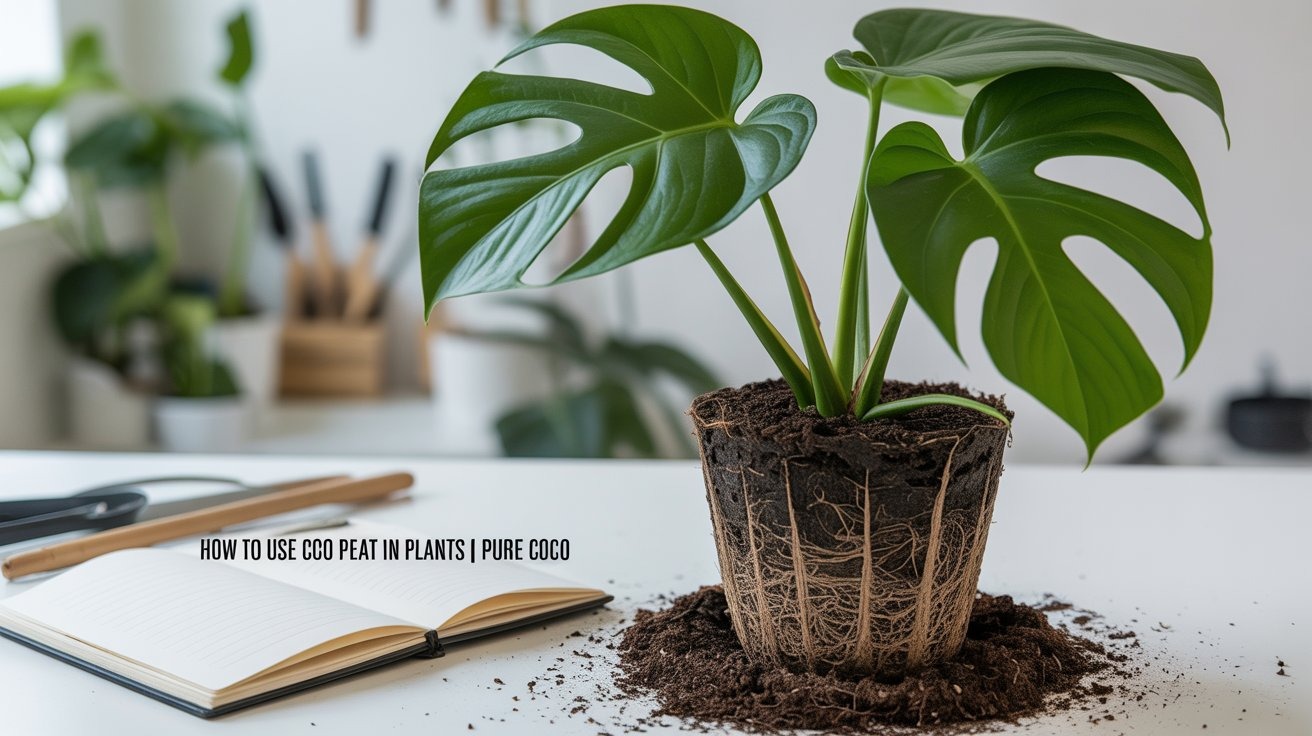Ultimate Guide to Cocopeat for Plant Growth
Discover how to use cocopeat for plant growth and enhance your gardening experience. Learn the numerous benefits of cocopeat, perfect for all plant enthusiasts seeking effective gardening tips.
6/16/20254 min read
What is Cocopeat?
Cocopeat, also referred to as coir pith, is a natural growing medium derived from the husk of coconuts. It is obtained during the processing of coconut fibers, a by-product of the coconut industry. When the outer husk is processed to extract fibers used for various applications, such as ropes and mats, the remaining material is ground and treated to produce cocopeat. This substance is rich in organic matter and exhibits remarkable properties that make it a preferred choice for many horticultural applications.
One of the significant advantages of cocopeat is its sustainability. As an eco-friendly product, cocopeat contributes to reducing waste in the coconut industry while promoting an environmentally responsible method of plant cultivation. By utilizing a by-product that would otherwise be discarded, gardeners and horticulturists can choose a growing medium that aligns with sustainable practices.
Cocopeat serves as an exceptional growing medium, primarily due to its superior water retention capabilities. It can hold up to eight times its weight in water, allowing it to maintain moisture around plant roots while preventing over-saturation. This feature is particularly beneficial for plant growth, as it reduces the frequency of watering and helps in maintaining consistent hydration levels. Furthermore, cocopeat enhances aeration within the soil mix, promoting healthy root development and preventing root diseases related to poor drainage.
The composition of cocopeat includes various microscopic pores and channels that facilitate air transfer and drainage, making it an ideal substrate for various plants. Its neutral pH level also ensures that it does not adversely affect nutrient uptake. Therefore, cocopeat stands out as a versatile and viable option for gardeners looking to support healthy plant growth through sustainable means.
Benefits of Using Cocopeat in Gardening
Cocopeat, derived from the fibrous husk of coconuts, has increasingly become a preferred growing medium among gardeners due to its multiple advantages. One of the primary benefits of cocopeat is its exceptional ability to retain moisture while simultaneously allowing for good drainage. This characteristic is vital for maintaining an optimal water balance in the soil, thereby ensuring that plants receive the hydration they require without the risk of waterlogging. As a result, cocopeat contributes to a healthier environment for plant roots, which is beneficial for their overall growth and development.
Moreover, cocopeat is nutrient-rich, containing essential elements that support plant health. It is often enriched with micronutrients, thereby providing a natural source of nutrients that are vital for plant growth. The organic composition of cocopeat enhances its capabilities as a substrate, allowing for improved nutrient absorption by plants. This can lead to stronger, healthier plants that are more resilient against diseases and environmental stressors.
Another significant advantage of using cocopeat is its ability to improve soil structure. The fibrous nature of cocopeat helps create air pockets in the soil, enhancing aeration and reducing compaction. This improved soil structure fosters better root expansion, promoting vigorous root growth. Additionally, when combined with traditional soil or other growing mediums, cocopeat can significantly optimize the growing conditions for a variety of plants.
Furthermore, cocopeat minimizes the risk of root rot, a common issue in waterlogged soils. Its ability to retain moisture yet provide adequate drainage makes it an effective medium for preventing overwatering and related problems. Overall, the diverse benefits of using cocopeat make it a valuable addition to any gardener’s toolkit, enhancing both plant health and gardening success.
How to Prepare and Use Cocopeat for Plants
Cocopeat, derived from the fibrous husk of coconuts, is an excellent growing medium used to enhance soil structure and improve water retention. Preparing cocopeat for use involves several steps that ensure optimal benefits for your plants.
First, if you have purchased dehydrated cocopeat blocks, begin by rehydrating them. This can be done by placing the block in a large container or wheelbarrow and gradually adding water. It is important to allow the cocopeat to absorb the water thoroughly. After approximately 30 minutes, the block will swell, resulting in a loose, fluffy texture. Once rehydrated, fluff the cocopeat with a garden fork or shovel to ensure an even consistency.
Next, cocopeat can be mixed with other components to create a suitable potting mix. For general plant growth, it is recommended to combine cocopeat with perlite and compost in a 2:1:1 ratio. This mixture will enhance aeration, drainage, and nutrient availability, making it suitable for container gardening. For hydroponics systems, blending cocopeat with vermiculite or expanded clay pellets may yield the best results, offering exceptional water retention while maintaining proper drainage.
Another aspect to consider is pH levels. Cocopeat typically has a pH of around 5.5 to 6.8, which is generally suitable for most plants. However, if your plants prefer a more alkaline environment, you can adjust the pH by incorporating a small amount of limestone. Use pH testing strips to monitor changes and ensure it aligns with the preferred levels of the specific plants you are cultivating.
In terms of best practices, it is advised to consistently monitor moisture levels when using cocopeat since it retains water efficiently. Additionally, incorporating slow-release fertilizers can benefit the nutrient content. Whether employed in container gardening or hydroponics, correctly preparing and utilizing cocopeat can significantly enhance plant growth and yield.
Tips and Best Practices for Growing Plants with Cocopeat
Utilizing cocopeat as a growing medium can significantly enhance the growth of your plants when used properly. One of the primary recommendations is to maintain an optimal watering schedule. Cocopeat is known for its excellent water retention properties; however, it is essential to ensure that you do not overwater your plants. To achieve this balance, test the moisture level by inserting your finger into the medium. If it feels dry up to the first knuckle, it is time to water. Aim for a consistent moisture level, ensuring the substrate does not become overly saturated, as this can lead to root rot.
In addition to watering, fertilizing plants grown in cocopeat is crucial for their overall health. Because cocopeat is low in inherent nutrients, incorporating a balanced, water-soluble fertilizer every two to three weeks during the growing season can promote healthier growth. Consider using organic fertilizers to enhance the nutrient profile of the cocopeat without introducing harmful chemicals into your plants' ecosystem.
Monitoring the health of your plants is another key aspect of successful cocopeat cultivation. Regularly inspect your plants for signs of distress, such as yellowing leaves, stunted growth, or unusual pests. Early detection is vital for addressing potential issues before they escalate. If you encounter problems such as nutrient deficiencies or fungal outbreaks, consult resources that provide solutions tailored to plants grown in cocopeat.
Cocopeat generally has a lifespan of about two to three years before it begins to break down and lose its structure. To revitalize your growing medium, consider mixing it with perlite or vermiculite to improve drainage. Regularly aerating the cocopeat and refreshing it with new material can further extend its life and foster an ideal environment for plant growth.
Pure Coco
Explore our range of coco peat products today.
Support
Contact
info@purecoco.com
+91-9015762289
© 2025. All rights reserved.
Support


